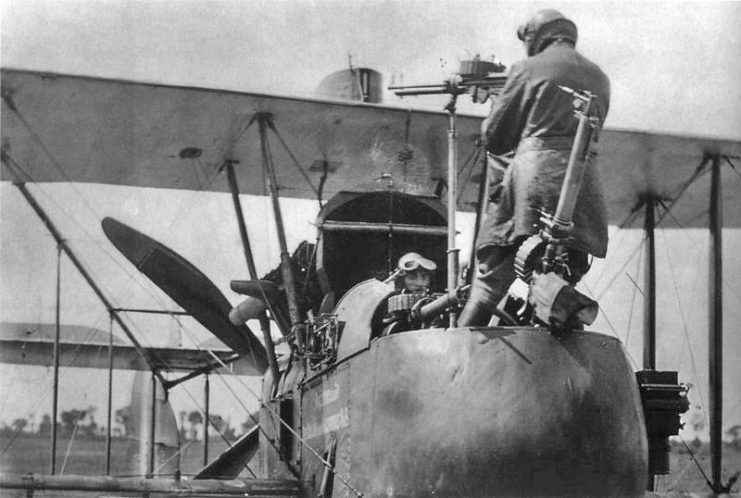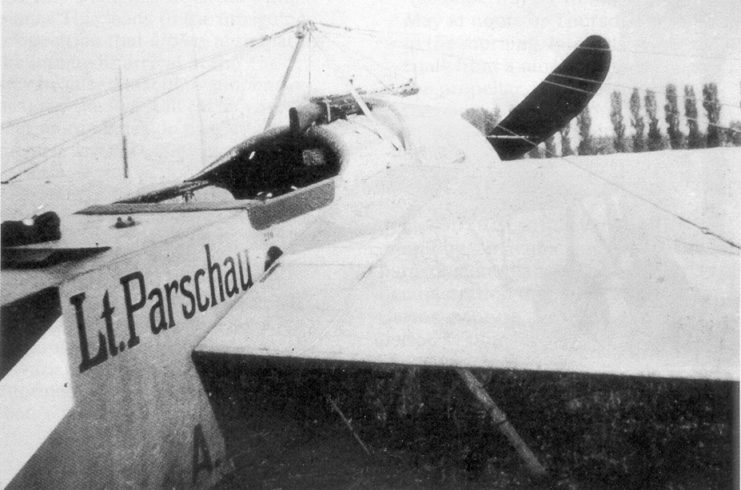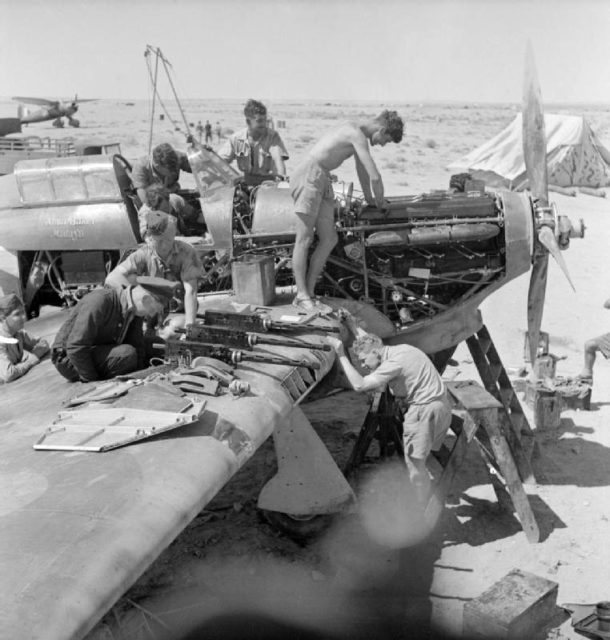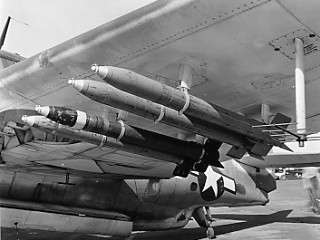In the space of just over a century, fighter planes developed from being non-existent to being a vital part of warfare. Along the way, their weaponry underwent several significant shifts.
Early Days
The first military planes were used for reconnaissance rather than combat. However, when enemies sent people into the air at the same time, fighting was going to occur.
In November 1913, the skies above the Mexican Revolution witnessed the first combat between planes. Pilots armed with pistols exchanged shots, but neither scored a hit. A year later, WWI broke out. In the skies above the Western Front, the fighter plane was about to be born.
In the first clashes of the war, pilots used pistols and rifles to attack each other’s planes. When better weapons became available on the ground, pilots inevitably wanted to use them. Attempts to carry machine guns followed. The aircraft, however, were light, their engines low on power by modern standards, and they struggled with the extra burden. On August 22, 1914, a British plane tried to carry a Lewis Gun into combat. It took half an hour just to reach 1000 feet due to the gun’s weight. The pilot was ordered not to do it again.

Mounting Machine-Guns
As the planes improved, machine-guns were installed for use by a second crewman but to make planes truly effective fighters; they needed forward firing guns. If they were lined up with a pilot’s view, then he could aim while flying. However, there was a problem. The closer it was to a pilot’s line of sight, the more likely the gun was to shoot off his own propeller.
The French made the first attempt to solve the problem – a propeller reinforced with steel. However, bullets could still harm the propellers, and those bouncing off might hit the pilot.
In 1915, Dutch engineer Anthony Fokker provided the solution for the Germans. His interrupter gear interacted with the gun’s mechanism, stopping it from firing when a propeller was in front of the barrel but enabling it to fire in the split seconds in between. In July 1915, the Fokker EI plane entered the war. The Allies imitated the technology, and the dogfight developed.

Changing Formations
Between the wars, machine-guns improved and the way they were mounted on planes changed. Multiple guns were carried, often in the wings of the aircraft.
Air forces upgraded the weapons they were using. For example, the British went from firing 750 rounds per minute from a Lewis gun to 1200 from a Browning. Those differences mattered. Pilots often only had a split second to fire as an enemy shot past. Getting plenty of lead into the air in that time was invaluable.
From Machine-guns to Cannons
The first attempt to install cannons firing explosive shells had been made during WWI. The British found that the recoil caused their planes to stall. The French were more successful, equipping some of their aces with 37mm cannon.
By the start of WWII, machine-guns were still standard. However, improved plane armor and the self-sealing fuel tank enabled planes to survive hits they could not have done before. Explosive rounds were needed to take them down.
There was a balancing act in deciding what weapons to equip planes with. The German Messerschmitt Bf109 could fire five shells a second from its cannon, allowing quick hits with explosive rounds. The British Hurricane’s eight machine-guns could spray 160 bullets in the same amount of time. The choice was between quantity or quality.
The result was often a compromise. The British installed later models of their Hurricanes and Spitfires with a mixture of cannons and machine-guns.

The First Air-to-Air Missiles
In the late 1930s, the Soviets experimented with air-to-air rockets as fighter weapons. They had impact-fused high-explosive warheads, allowing them to do substantial damage to an enemy.
The Germans were at the cutting edge of rocketry and deployed it most successfully during the war. Their first air-to-air missile was an 8.27-inch rocket with a 22.5lb high-explosive warhead. A timed fuse triggered it. Late in the war German fighters often carried 24 of them, making up for their crude mechanisms with large salvos.
By the end of the war, several countries were experimenting with rockets. The unguided missiles continued to be used through to the 1950s. The most devastating example was the Douglas Genie, whose 1.5 kilotons nuclear warhead had a lethal radius of over 1000 feet.

Guided Missiles
The real breakthrough for air-to-air missiles came with the development of guidance systems. They mostly came in two types.
Infra-red guided missiles have sensors that lock onto a heat source, such as the exhaust of a jet engine. They then pursue and explode on that heat source.
Radar initially aims radar guided missiles on a fighter, which illuminates the target. Once fired, the missile’s own radar targeting system takes over, steering it toward the target.
The way that missiles were fused also changed during the years following WWII. An explosive warhead does not necessarily need to hit a target directly. As long as it is close, its explosion can destroy an enemy plane. Proximity fuses, therefore, are the norm.
Short, medium and long-range missiles are all now in use, some with ranges of hundreds of miles. Planes continue to carry a cannon, such as the Aden, the British adaptation of the old German Mauser MG-213. With missiles flying at several times the speed of sound and locking onto targets hundreds of miles away, aerial warfare has changed dramatically.
The up close and amateurish combat of two flyers waving pistols from their cockpits is a long way behind us.
Sources:
Charles Rivers Editors (2014), The Red Baron: The Life and Legacy of Manfred Von Richthofen
Francis Crosby (2010), The Complete Guide to Fighters & Bombers of the World
